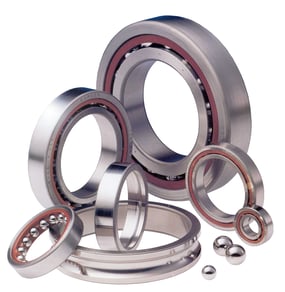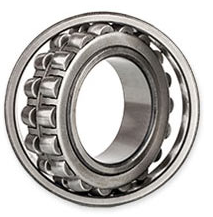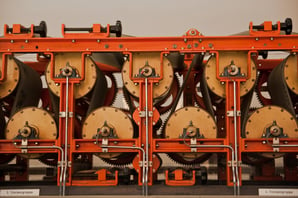Levels of Precision: Choose the Right Bearing to get the Best Life for Your Application…
Leave a CommentAt Action Bearing we are fully dedicated to our customers, and take pride in making outstanding products as well as providing accurate documentation of their performance. Our bearings are engineered and manufactured with the highest levels of precision, and uphold the highest quality standards, however, no bearing lasts forever. So how can you be sure that your bearing will perform well throughout its life?
Rolling element bearings are known for being extremely reliable, and many even outlive the machines on which they are installed. However, several factors can shorten a rolling element bearing’s life, and load and speed are the most common causes for early failure. A load that exceeds the bearing specification can accelerate fatigue, shorten its life up to a factor of 8-10, and a speed exceeding the veering specifications can also dramatically decrease a bearing life. Other factors like extreme temperatures, vibrations, and dirt or contaminants play an important part in a bearing’s life.
Nevertheless, if a bearing was selected correctly and used for the correct application, it will surely last for the specified lifetime (and probably longer). Listed below are approximate values for bearing life (measured in operating hours) that you can expect for different applications: 
- Hobbyist’s power tools: 100-150 hr
- Professional power tools: 100-1000 hr
- Household appliances: 200-3000 hr
- Agricultural machinery: 500-5000 hr
- Tractors: 5000-12000 hr
- Cars and trucks: 800-10000 hr
- Trucks generally have a longer bearing life by design than cars
- Hydraulic systems: 1000-20000 hr
- Bearings in stationary hydraulic systems generally outlast bearings in mobile hydraulic systems
- Office and data processing machinery: 1200-16000 hr
- Material handling equipment: 2000-18000 hr
- Rolling mills: 2000-20000 hr
- Compressors: 3000-20000 hr
- Building material machinery: 5000-50000 hr
- Crushers: 13000-40000 hr
- Extruders: 20000-50000 hr
- Industrial gearboxes: 20000-50000 hr
- Textile machinery: 20000-70000 hr
- Printing presses: 35000-100000 hr
- Paper machinery: 75000-150000 hr
Action Bearing is here to help you get the most out of your bearings. For years our experienced team has been providing high quality bearings across a large span of different industries. Consult with us, and we’ll make sure your bearing lives a long, full, productive life. For more information on which kind of bearing is best for you, visit our Catalog and Technical Toolbox web pages.

 Please visit Emersonbearing.com for our latest blogs and updates!
Please visit Emersonbearing.com for our latest blogs and updates!

